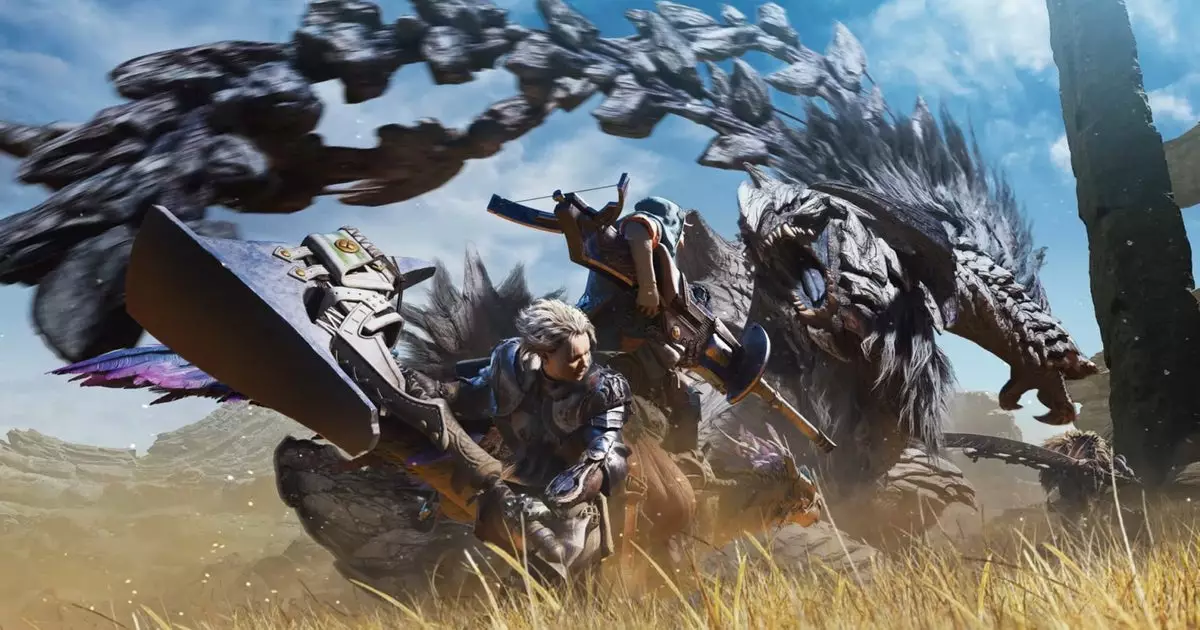The Monster Hunter franchise is renowned for its complex mechanics, breathtaking environments, and tantalizing weaponry. With the latest installment, Monster Hunter Wilds, Capcom continues its tradition of refining the ominous art of monstrous confrontation. However, the latest updates to the armory reveal a tendency towards familiarity rather than a bold invention of new weapon categories. This article delves into the nuances of the weaponry progression in Monster Hunter Wilds, offering insights on the choices made by the developers and how they plan to balance innovation with legacy.
Familiarity in Weapon Types
At first glance, Monster Hunter Wilds introduces a plethora of new elements that enhance the gaming experience. The new variety of tinctures derived from wyvern, toad monsters, and arachnids seems promising. However, when examined closely, the weapon types largely stay true to the legacy of their predecessors. The aesthetic improvements may be striking, but they lack groundbreaking changes to the core mechanics and functionalities of the weapons. The arsenal remains reminiscent of the weapons available in earlier editions; veterans would feel nostalgia flipping through the weapon roster, as many of the items bear a striking resemblance to those from Monster Hunter Freedom 2, a game that graced the PSP in 2007.
Director Yuya Tokuda emphasizes the current development philosophy: enhancing and balancing existing weapon types takes precedence over introducing new ones. The nuanced approach to weapon adaptation may still yield variations in complexity and effectiveness, but the limited diversity of weapon categories restricts the creative scope. While new additions have ventured into the realm of unique gameplay mechanics, such as the Insect Glaive from Monster Hunter 4, the basic structure of weaponry remains unchanged.
Balancing Act of Newcomers and Tradition
Adding new weapons to an already sprawling lineup poses inherent challenges. Tokuda articulates this struggle, mentioning the delicate balance between maintaining the integrity of existing weapon types while also introducing freshness. The current weapon roster encompasses 14 differing categories, from the straightforward Greatsword to the intricate Hunting Horn, all of which have their unique strengths and synergies. However, a 15th weapon becomes a challenging proposition. It must not only feel equally valid compared to the others but also differentiate itself in a way that does not lead to redundancy within the lineup.
This quest for balance manifests in the developers’ continual refinement of all weapon types. Each iteration strives to inject new depth through menus of combos, moves, and interactions among weapon types. The investment of resources and time has always leaned towards enriching the existing arsenal rather than adding unfamiliar elements that might not integrate smoothly with the existing ecosystem.
The complications don’t end with managing existing weapons; the developers must also navigate player expectations based on their experiences with previous titles. The Iceborne expansion of Monster Hunter: World introduced higher-tier mechanics, targeting a player base already familiar with fundamental weapon functionalities. Tokuda recognizes this complexity, pointing out that those transitioning from Iceborne come expecting a level of mastery in their weapon usage that may not align with the broader player base of Monster Hunter Wilds. Balancing the expectations of proficient players while ensuring accessibility for newcomers presents a unique conundrum.
Despite the dual pressures of tradition and innovation, the enhancement and balancing of weapon mechanics in Monster Hunter Wilds resonate uniquely with fans of the franchise. Unlike other gaming series where new weapon types may feel formulaic, the connection of each weapon in Monster Hunter to a specific monster sets up a richer exploration of creativity. Capcom’s ability to develop unique weapons from some of the most imaginative beasts in gaming history continues to hold intriguing potential.
Considering the wealth of possibilities, one wonders if Capcom should unleash an even more extravagant imaginative approach to weapon design. The idea of design teams generating bizarre concepts—think a wyvern woven from balloons or an insect monster shaped as nested triangles—could lead to eclectic weaponry that defies expectations. Such creativity might push the boundaries of the series while preserving its essence. However, for now, it seems the formula remains conservatively adhered to, prioritizing refinement over radical redesign.
Monster Hunter Wilds presents a worthwhile evolution of the franchise’s core weapon mechanics. Nevertheless, a cautious approach to weapon categorization raises questions about the future direction of weaponry design within this beloved series. The careful balancing act executed by the developers of maintaining nostalgia while slowly innovating speaks to their desire to cater to both new players and seasoned veterans. As the series progresses, fans can anticipate not just more of the familiar, but perhaps one day, an injection of the completely unexpected.

